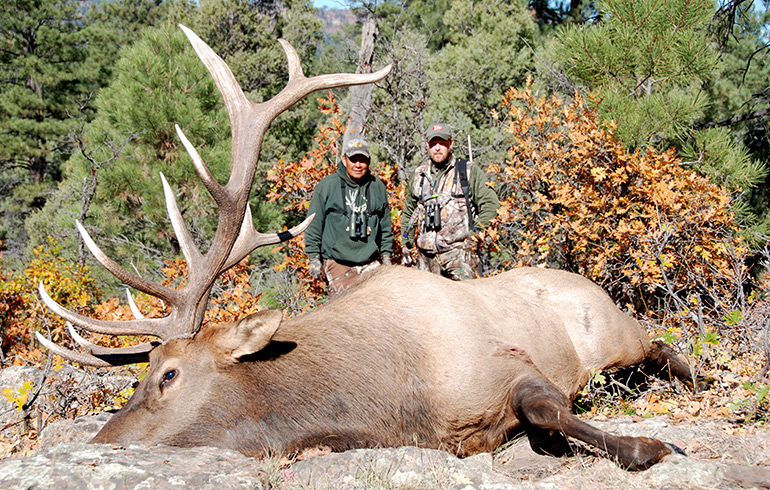Elk – North America’s Most Majestic Game
Though I have been fortunate to hunt a lot of different animals around the globe, without a doubt the North American elk ranks at the top of my favorites to hunt.
I think they are the most majestic of the deer species, their meat is my favorite from North American animals, the country they live in is beautiful, and when they are bugling, there is not more exciting hunting pursuit. I have taken a number of elk with both bow and muzzleloader, but if I have my choice, I am going to pick up my favorite rifle to chase bull wapiti.

I want the power and range that a rifle gives me, and there are varied seasons ranging from August to December in different states or Canadian provinces where using a rifle are legal.
In the early seasons when elk are bugling, I just don’t think you can find a better hunt. You can locate bulls easily through their calls that can be heard for very long distances, and then you can move in for a stalk or try to call them to you. One of my favorite things about this type hunt is that as long as you can hear a bull, you know you are in the game. Can you imagine how much more fun it would be if whitetail bucks let us know where they were during the rut!
I am an old turkey hunter, and elk hunting in the bugle is the same game to me as chasing spring gobblers, except you have to watch the wind, and when your calls work, you get a 700 pound bull coming in looking to either fight or breed. I don’t want to be on the other end of either of those scenarios!
Mid to late October and November hunts can be tougher. The bulls are not bugling, and the big boys often go off alone into the nastiest country they can find and recover from the stresses of the rut. These are spot and stalk hunts with lots of glassing and hiking.
In places like New Mexico that have December elk hunts, the hunting can be fantastic, and some of the largest bulls are taken during these late hunts. Bulls move down out of heavy snow, and they feed a lot more in the open during daylight hours as they attempt to build up fat stores for the winter. You will often find bachelor groups of bulls, and they can be fairly predictable on feeding patterns.
Glassing and stalking are employed on these hunts, and a good flat shooting rifle is a great benefit. With not as much cover left and the elk often being in large open meadows, longer shots are often required. The only downfall to these late hunts is that many of the bulls at this time have broken antlers from fighting all fall.
In my opinion any caliber from .30-06 to .338 is perfect elk medicine, and my personal favorites are the .300 Win and the 7mm’s. I generally shoot Winchester 180-grain Accubond CT’s or XP3’s out of my .300 Win. when elk hunting, and I am proud to say I have never had an elk get away after I decided to shoot him with one of these loads.
Both of these offerings have plenty of power moving at 2950-3000 fps, they are very well constructed bullets providing deep penetration and controlled expansion, and in all 4 of my .300 Win rifles, they shoot sub-minute of angle.
I can say in all honesty that I am counting the days until my New Mexico rifle elk hunt next fall. The aspens will be turning, the bulls will be bugling, and I will be ready knowing that my favorite rifle is loaded with Winchester ammunition that will get the job done.




